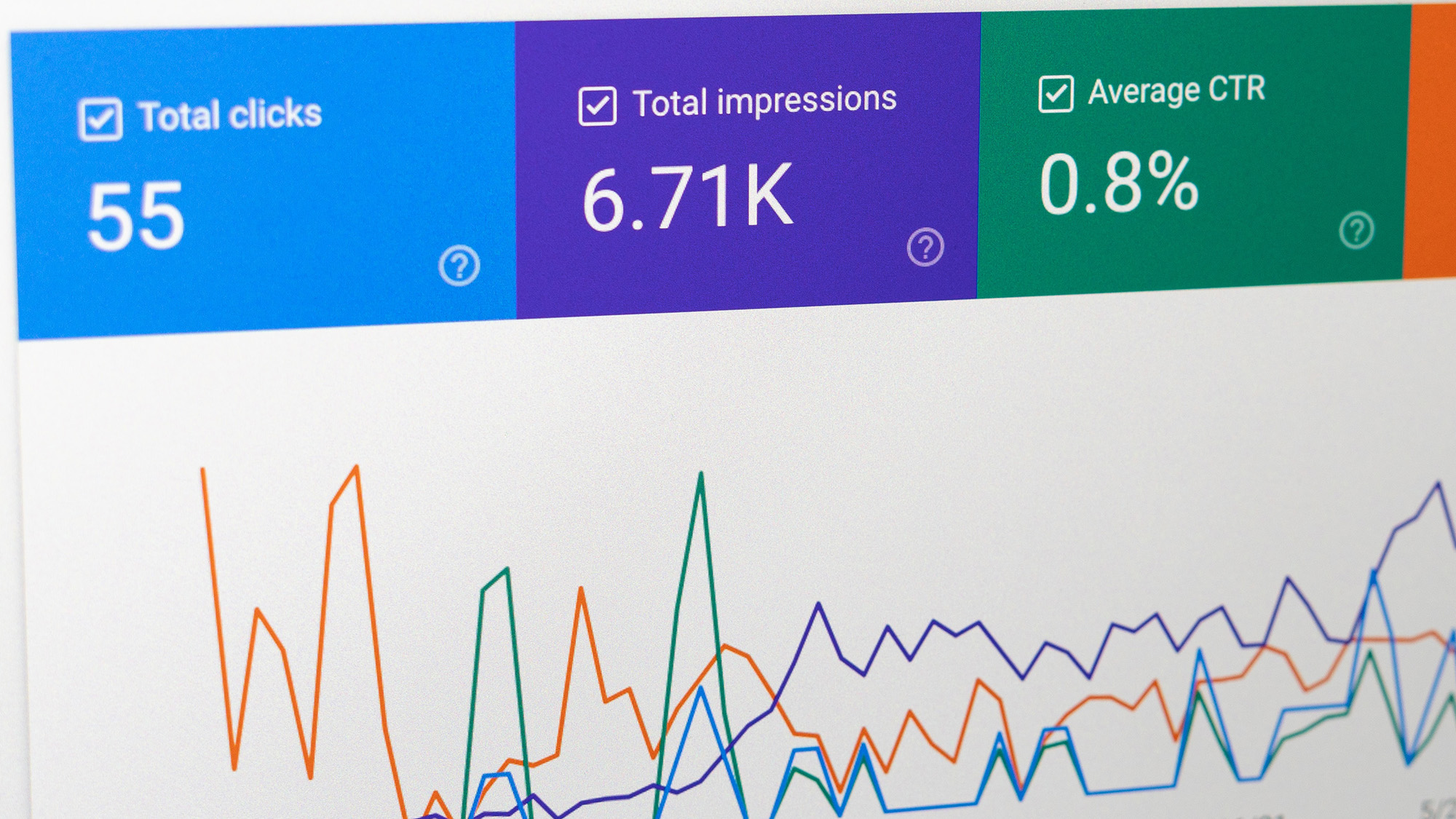Knowing how your site is performing in search engine results is important. You can make sure that your SEO strategy is doing what it’s supposed to be doing, find unexpected search terms people are using to find your site, and generally keep an eye on what works and what doesn’t.
But navigating Google products can be difficult, even ones as relatively straightforward as Google Search Console. So here’s a quick guide to making Google Search Console work for you.
Setting up Google Search Console
Before you can find out how your site is doing, you have to make sure that Google actually sees your site. Luckily, setting up Google Search Console is easy.
To start, go to the Google Search Console Welcome, and choose either the Domain option or the URL option.
Domain will look at every subdomain (such as m.domain.com, www.domain.com, etc.) and view the site across HTTP and HTTPS. You will need to add a TXT record to your DNS entries. We have details on how to add a TXT record to your DNS if you’re hosted with us. Once you’ve added your TXT record, it might take a few days for Google Search Console to verify your domain, but it should happen pretty quickly.
URL will look at only one domain prefix under one protocol (https://www.domain.com or http://m.domain.com, for example, but not both). There are different ways to verify your URL, either through uploading a file from Google, adding a meta tag to your home page, connecting Search Console to your Google Analytics or Google Tag Manager accounts, or, like the Domain version, adding a TXT record to your DNS.
Whichever way you choose to verify your site, give it a bit of time to get set up, and then once it’s verified and recording data, you can start exploring.
Looking at your popular queries
While you can start looking at your data from that day, it’s better to let some time pass before you start digging. Try to hold off for at least a month, just to make sure you have a good data set before you start analysing.
There are a lot of things you can spend hours checking on Google Search Console, from which pages Google is crawling to possible security issues to which sites are linking to yours, but we’ll be primarily focusing on the Search Results Performance report, which you can find under Performance -> Search Results. Along with giving you a graph of clicks, impressions, and your click-through rate, you can also see the top queries for your site.
Because it lists every single query that your site has appeared in, no matter what your ranking is, it can be a lot to take in, especially if you’ve collected data for several months or years. But if you set it up to organise by clicks or by impressions, you can see what’s been popular for your site.
Picking the right queries to track
What might be popular for your site might not be the queries you’re particularly interested in tracking. For example, the top 10 clicked-through queries for us in April were:
- ecowebhosting
- eco web hosting
- ecowebhosting.co.uk login
- ecowebhosting login
- ecoweb hosting
- eco web hosting login
- eco webhosting
- www.ecowebhosting/cp/profile
- eco web
- eco hosting
Which, obviously, great, everyone can get to our site if they know our name (and apparently some people have a problem typing in the URL into the browser), but what about people who are searching for us but don’t know our name yet?
You want to keep track of what’s popular in search queries for your site, but you should also keep track of popular keywords for your industry — especially those that you’ve been building up in your search engine optimisation strategy.
If you’ve chosen specific keywords for your pages, start searching for them in the report by clicking “+ New” at the top of the report and then filtering by the query. You might find that you’re not showing up in searches for those keywords yet, so give it a bit of time before you decide to scrap those keywords entirely.
Alternatively, you can go through all the keywords that have been viewed, and pick and choose the ones you’d like to focus on. This is great if you don’t have a specific keyword strategy or want to see what people are looking for when they come to your site.
Because we’re trying to make a good impression on the sustainable web design market, our chosen keywords to monitor are ones like:
- eco friendly vps
- eco friendly web hosting
- environmentally friendly web hosting
- green web hosting
- green wordpress hosting
- sustainable web hosting
- uk web hosting
You can also stick regional variations at the end of your keywords, such as “green web hosting uk” or similar. Each keyword will have unique results, and you might find that by adding more words, you get a higher click-through rate.
Building your report
Once you have your keyword lists, it’s time to make your report.
Ours is pretty straightforward, including the total clicks and impressions for the month, the click-through rate, the top 10 performing keyword queries, and then our specialised keywords, to be sure that we’re hitting all the right bits of data.
You can also click through to each keyword to find detailed information, including click-through rates and average position, which are great to add to your report as well.
Set up a reminder to check Google Search Console at the beginning of every month, collect your data, make the appropriate changes to your search engine strategy, and you’ll see results before you know it!

